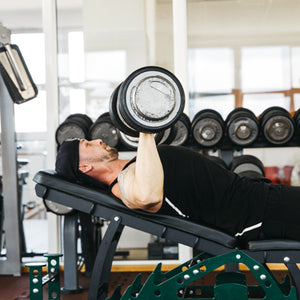
Poor Circulation: What Is It and What Can You Do About It?
Poor circulation isn't a specific diagnosis but a symptom or result caused by various other conditions. The term poor circulation is used to describe the physical symptoms of inadequate flow of fluids, including blood, in any of these body structures:
- Arteries, which carry the blood supply to the arms and legs
- Veins, which carry the blood supply back to the heart
- Lymphatic system, which drains fluids to prevent accumulation in the tissues
The signs and symptoms of poor circulation can be managed by treating the underlying causes.
Signs and Symptoms of Poor Circulation
Poor circulation results when illness or disease, physical condition, or physical injury interferes with the complex circulatory system that moves blood, oxygen, and nutrients throughout your entire body. If your circulation is inadequate, your cells aren't getting the oxygen they need to function properly.
Some of the major signs and symptoms indicating a problem with adequate circulation include:
- Your muscles feel weak or hurt when you walk
- You experience a pins and needles sensation on your skin
- Your fingers or toes feel cold
- You experience numbness in your extremities
- You have episodes of chest pain
- Your skin is pale or has a bluish tint to it
- You notice swelling in your extremities
- You have veins that bulge
These signs and symptoms are more likely to appear in people who are over the age of 40, are overweight, are diabetic, or don't get as much exercise as they should.
Common Causes of Poor Circulation
There are many health conditions, some of them serious, linked to poor circulation. Disorders and lifestyle choices such as abusing alcohol, smoking, and overeating can result in a decreased blood supply to different areas of the body. The most common diseases linked to poor circulation are atherosclerosis and peripheral artery disease.
Atherosclerosis
This common condition occurs when a sticky substance called plaque collects inside your arteries. The slow buildup of cholesterol, blood cells, fat, and other substances in your blood forms plaque. As the plaque accumulates, it causes the space inside your arteries to narrow. This reduces the amount of oxygen- and nutrient-rich blood that can get through to your organs and extremities.
Peripheral Artery Disease
Peripheral arteries supply blood to the extremities. Peripheral artery disease (PAD) is a common condition that results from a reduction in blood flow to the arms or legs. PAD is caused by a narrowing in the. When your legs don't receive enough blood flow to meet the demand, leg pains when walking and other symptoms can occur.
Diabetes
Poor circulation is a major consequence of diabetes. The decreased blood flow to the legs and feet leads to cramping in the legs, thighs, and calves. Diabetics are also at risk for diabetic neuropathy, a condition in which the nerve endings in the legs become damaged and prohibit sensations.
Obesity
In the United States, over 60% of the population is overweight or obese. Carrying excess weight puts you at risk for medical problems that can slow down your blood flow, such as high blood pressure, diabetes, high cholesterol, varicose veins, and heart and kidney disease.
Smoking
Smoking causes one in five deaths in the United States. It is recognized as a major cause of cancer, but it also damages the blood vessels. This leads to poor blood circulation in the extremities and to the vital organs.
Long-Term Risks of Poor Circulation
Poor circulation is not a condition that will get better on its own over time. In fact, it can get much worse. If you allow poor circulation to go untreated, serious health conditions can result. A few examples include:
- Heart attack
- Heart disease
- Aneurysm
- Congestive heart failure
- Deep vein thrombosis (DVT)
- Ulcers in the extremities
- Stroke
The earlier you begin treatment for poor circulation, the better the long-term outcome. You can manage poor circulation through proper medical treatment and lifestyle changes.
Treating Poor Circulation
The first step in treating poor circulation is a check-up by your healthcare provider. If you require medication or surgical intervention to treat your condition, your provider will discuss that with you. You may also be encouraged to make lifestyle changes. In many cases, your primary care provider will refer you to a vascular specialist.
A vascular specialist may recommend an exercise routine and a diet program that includes nutrient-rich foods like fruits, whole grains, healthy fats, and vegetables. You may be encouraged to reduce your intake of processed foods and saturated fats. Some patients with poor circulation may benefit from invasive medical treatments such as angioplasty or bypass surgery. Your vascular specialist will recommend these procedures if they are indicated.
Medications and Supplements
Your healthcare provider may prescribe medications to treat your poor circulation if it severe. However, there are supplements you can add to your stack to help strengthen your circulatory system.
- Vitamin E
- Multivitamins and multi-minerals
- folic acid
- niacin
- antioxidants
- beta-carotene
We recommend starting with a simple all-in-one product, such as MTS Nutrition Immortal. It's a convenient daily vitamin pack that supports overall health and wellness. You can go check it out here.
As always, check with your healthcare provider before adding any supplement to your routine.
What You Can Do to Improve Your Circulation
With the approval of your healthcare provider, you can take these simple steps to increase your blood circulation.
- Regular exercise. Get regular, low-impact exercise to support heart and circulatory health. Exercises such as walking, yoga, stationary bicycling, and swimming can reduce the discomfort of poor circulation.
- Prop your feet up. Elevating your feet helps reduce swelling and reduce the build-up of excess fluid.
- Stop smoking. Quitting improves your blood circulation.
- Wear compression garments. These types of garments increase blood flow in the legs and feet.
- Maintain a healthy weight. Keeping your weight in a healthy range reduces your risk of poor blood circulation, arthritis, heart disease, and diabetes.
Bad Circulation: The Takeaway
The bottom line is this: the best way to manage poor circulation is to prevent it from ever happening. The recommended lifestyle changes above are easily within reach. These are not drastic changes to your lifestyle, but they can make all the difference when it comes to keeping your circulatory system healthy. So, prop your feet up and turn to Tiger Fitness for supplements to boost your circulation.








